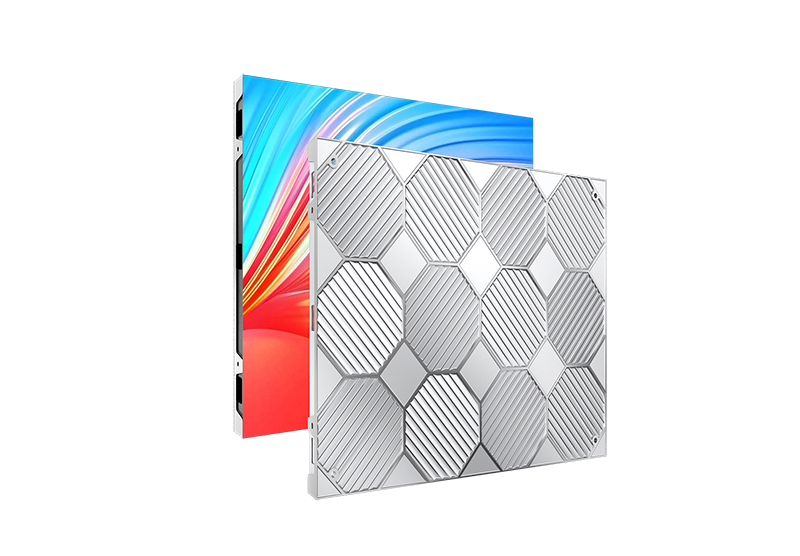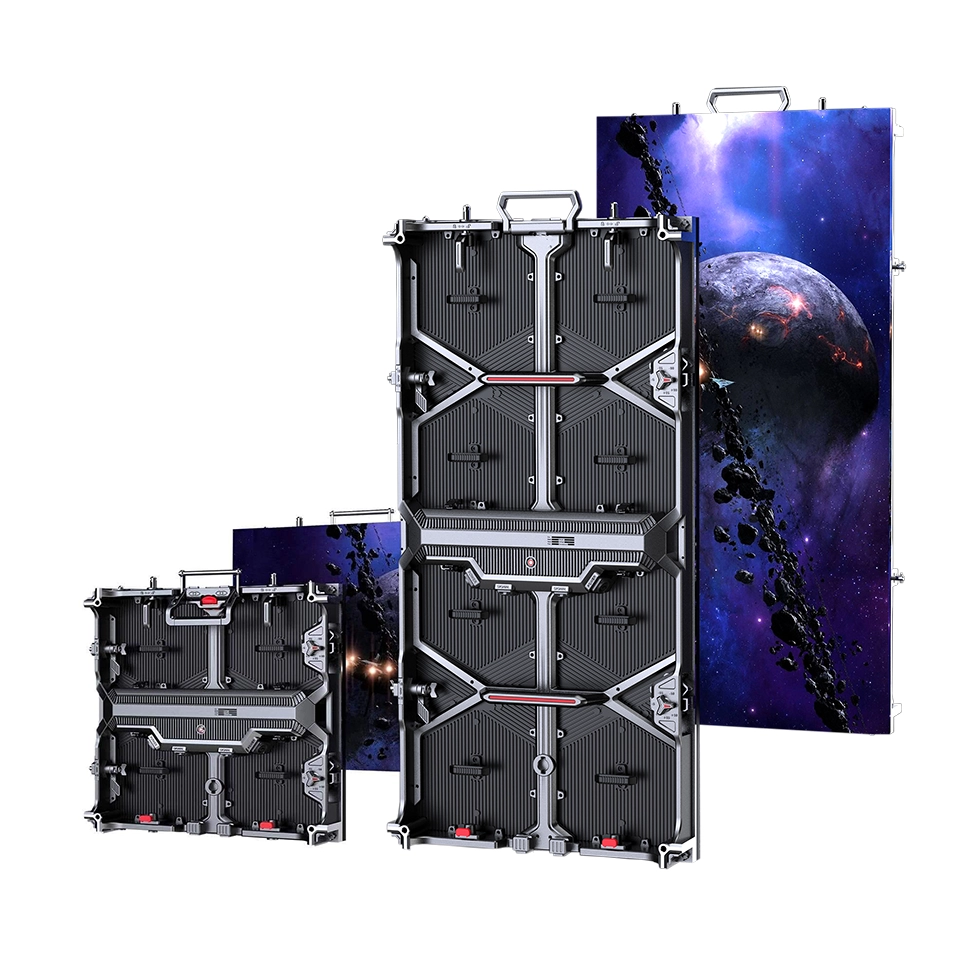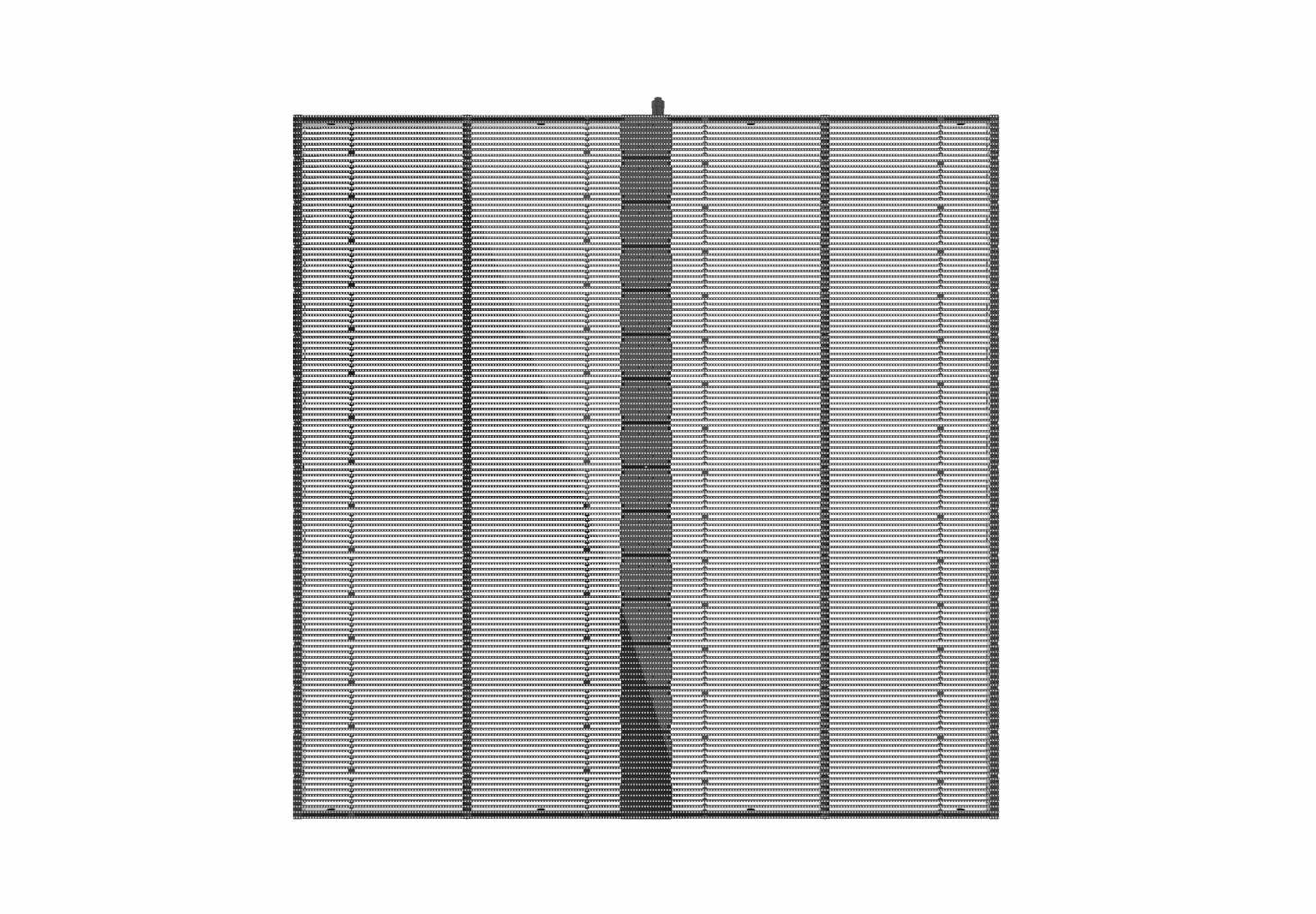Auditorium LED Screen
LED Display For Auditorium
Auditoriums are venues where large audiences gather to enjoy various types of performances, such as concerts, plays, musicals, lectures, and ceremonies. To enhance the visual experience of the spectators, auditoriums need to have high-quality display screens that can show clear and vivid images, videos, and texts. LED screens are the ideal choice for auditoriums, as they offer many advantages over traditional projection screens.
Why are LED screens better than projection screens for auditoriums?
LED screens have several benefits over projection screens for auditoriums, such as:
- Higher brightness and contrast: LED screens can emit light directly, while projection screens rely on reflected light from a projector. This means that LED screens can achieve higher brightness and contrast levels, making them more visible and attractive in bright or dark environments. LED screens can also adjust their brightness automatically according to the ambient light, ensuring optimal viewing conditions at all times.
- Wider viewing angle and color gamut: LED screens can provide a wider viewing angle and color gamut than projection screens, which means that they can display more colors and details, and they can be seen from different angles and distances without distortion or color loss. LED screens can also support high-definition (HD) and ultra-high-definition (UHD) resolutions, delivering sharper and smoother images.
- Longer lifespan and lower maintenance: LED screens have a longer lifespan and lower maintenance costs than projection screens, as they do not require bulbs, filters, or lenses that need to be replaced or cleaned regularly. LED screens are also more durable and resistant to dust, moisture, and temperature changes, making them suitable for indoor and outdoor applications.
- More flexibility and creativity: LED screens can offer more flexibility and creativity than projection screens, as they can be customized to fit any size, shape, and curvature of the auditorium. LED screens can also be integrated with other elements, such as lighting, sound, and stage design, to create immersive and interactive experiences for the audience.
How to choose the best LED screen for your auditorium
Full-colour auditorium LED screens, LED curtains, and LED mesh can also make a very effective backdrop for the stage, the content of which can be changed with every event at the click of a button. Cylindrical LED video walls which can be viewed from all directions can be artistically placed in the center of the room.
There are many factors to consider when choosing the best LED screen for your auditorium, such as:
The type and purpose of the performance: The type and purpose of the performance will determine the content and format of the LED screen. You need to consider the genre, style, and theme of the performance, and the message and mood you want to convey to the audience. You also need to consider the frequency, duration, and schedule of the performance,and how they will affect the operation and management of the LED screen.
- Rental & Mobile Type could move from one hall to another from times to times,
- Fixed installation. Fixed mounted led screen will be permantly installed,to general cost will be lower and with higher Resolution. Pixel pitch usually from 1.2 to 2.5mm.
- Transparent led display. When there is lighting behind the led wall, or the space is limited. transparent led display will be a good option . Hower ther resolition is lower than normal led screen, if the screen size is not big enough.
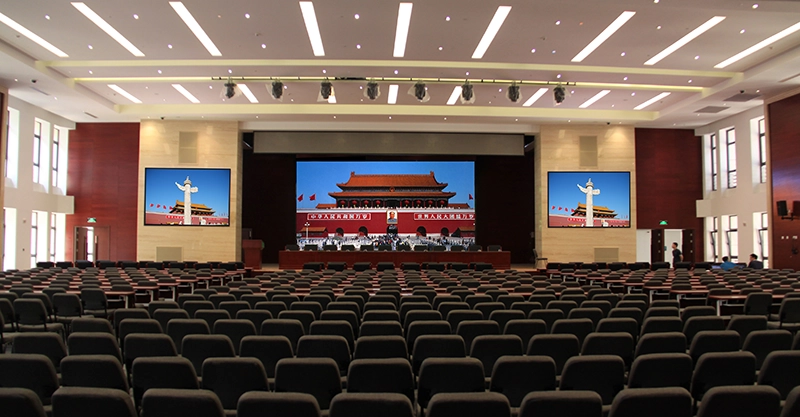
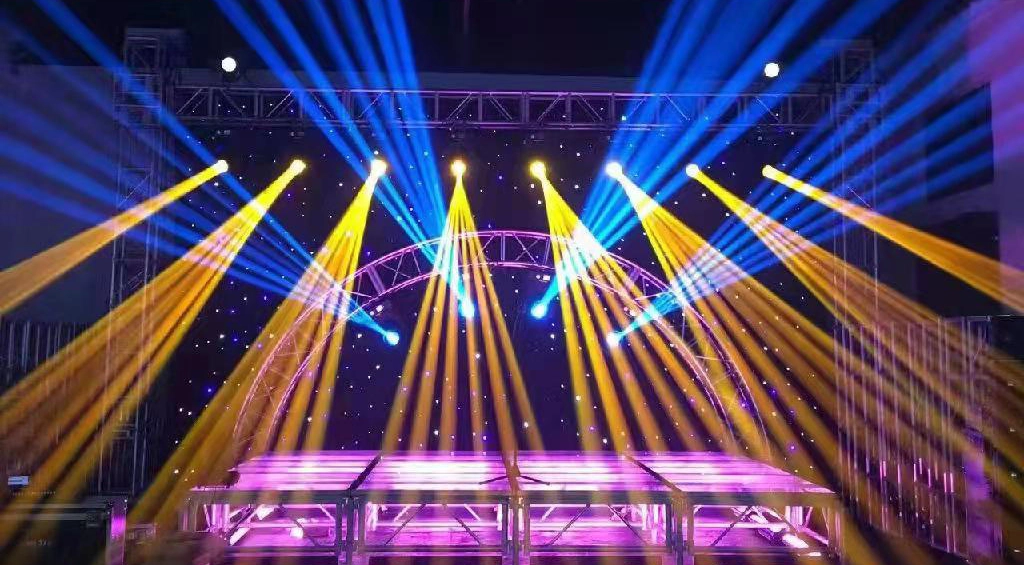
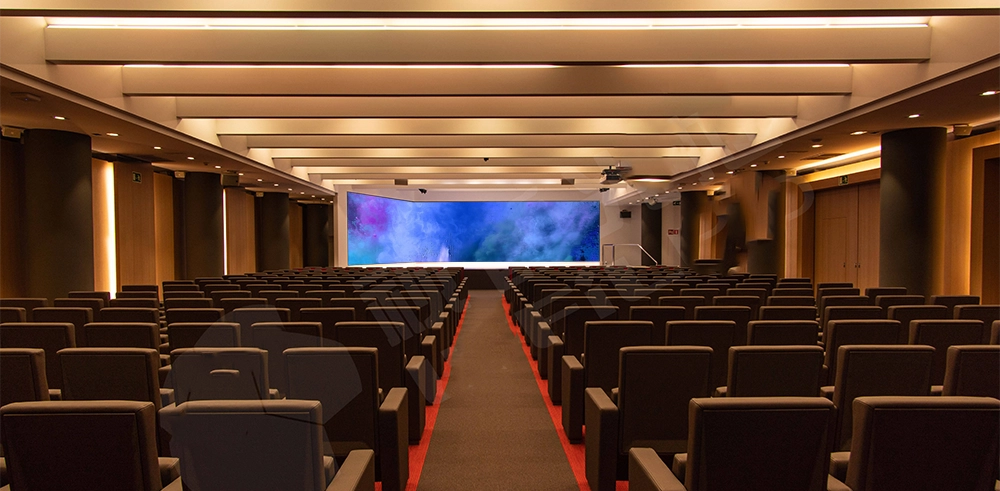
The size and layout of the auditorium.
The size and layout of the auditorium will determine the optimal size, shape, and position of the LED screen. You need to consider the dimensions, height, and distance of the stage, the seating capacity and arrangement, and the sight lines and viewing angles of the audience. You also need to consider the acoustics, lighting, and ventilation of the auditorium, and how they will affect the performance and installation of the LED screen.
The budget and resources of the project.
The budget and resources of the project will determine the quality and quantity of the LED screen. You need to consider the cost, availability, and reliability of the LED screen, and the return on investment (ROI) and value for money (VFM) you can expect from it. You also need to consider the installation, operation, and maintenance of the LED screen, and the technical support and service you can get from the supplier.
LED Display Parameters.
Refresh rate
The refresh rate of an LED screen is the number of times per second that it updates the image on the display. The higher the refresh rate, the smoother and clearer the motion on the screen. A high refresh rate screen can reduce flickering and ghosting effects, which can cause eye strain and fatigue. You should look for a screen with a high refresh rate, preferably above 2880 Hz if the led screen is going to be taken video by the audience.
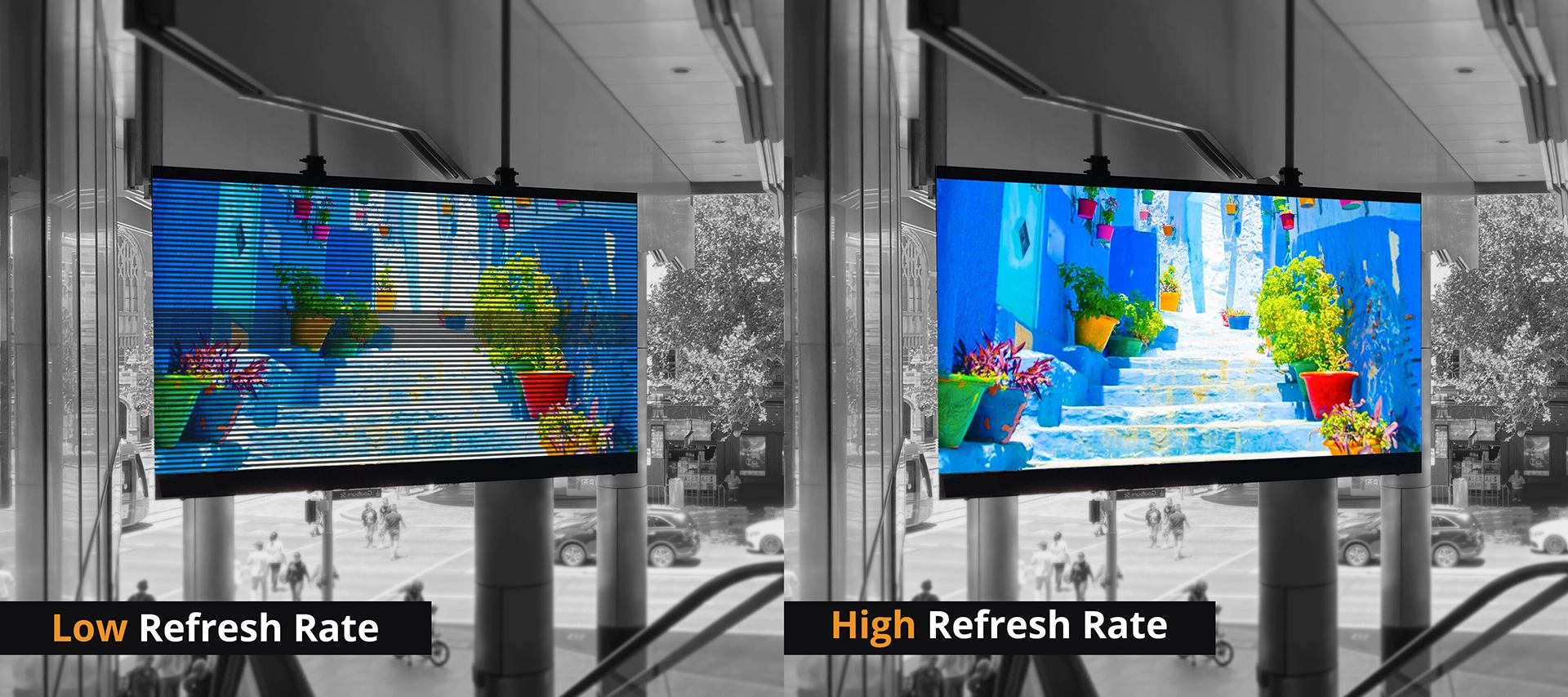
-
Color gamut
The color gamut of an LED screen refers to the range of colors that it can display. The wider the color gamut, the more colors and shades that the screen can reproduce. A wide-color gamut screen can show more realistic and natural colors than a narrow-color gamut screen. You should look for a screen with a wide color gamut, preferably covering at least 85% of the DCI-P3 color space. However, you should also check for color accuracy, as some screens may have a wide color gamut but poor color calibration.

